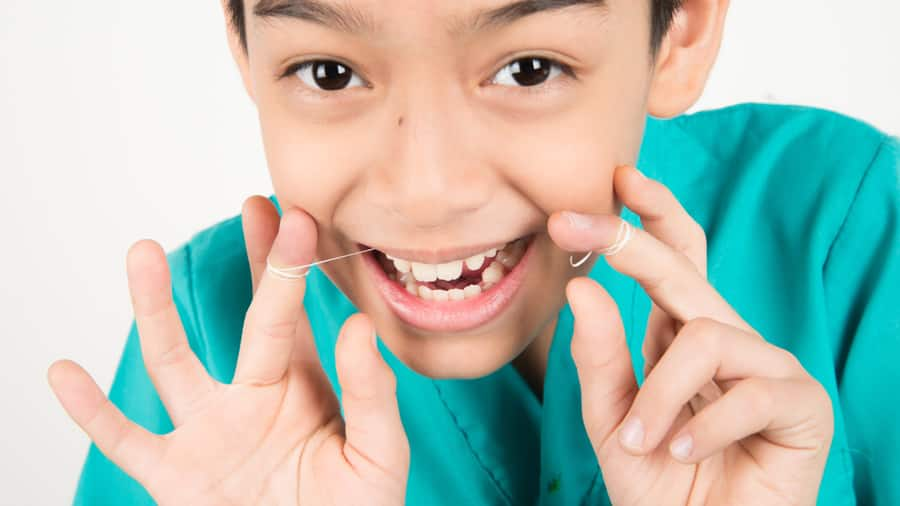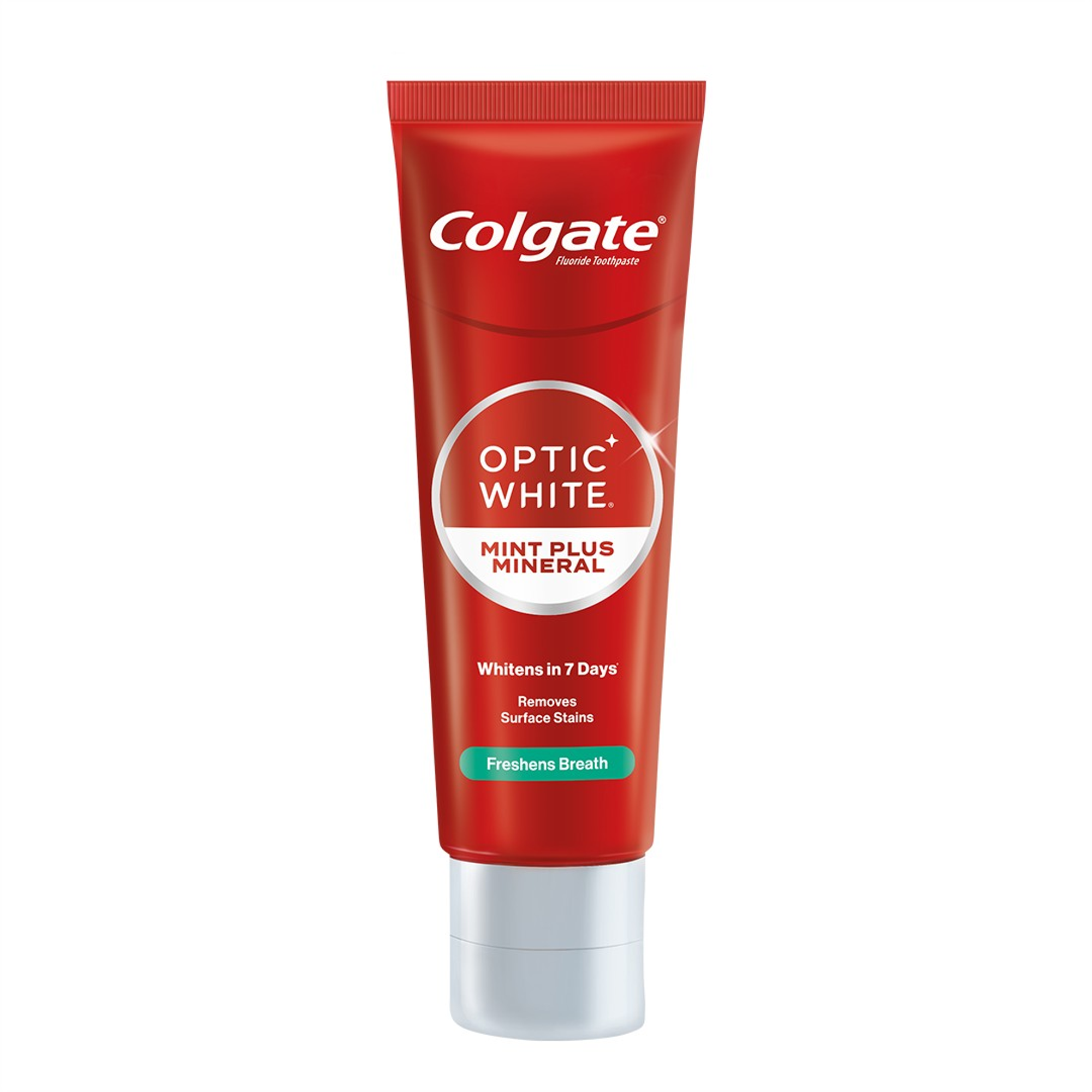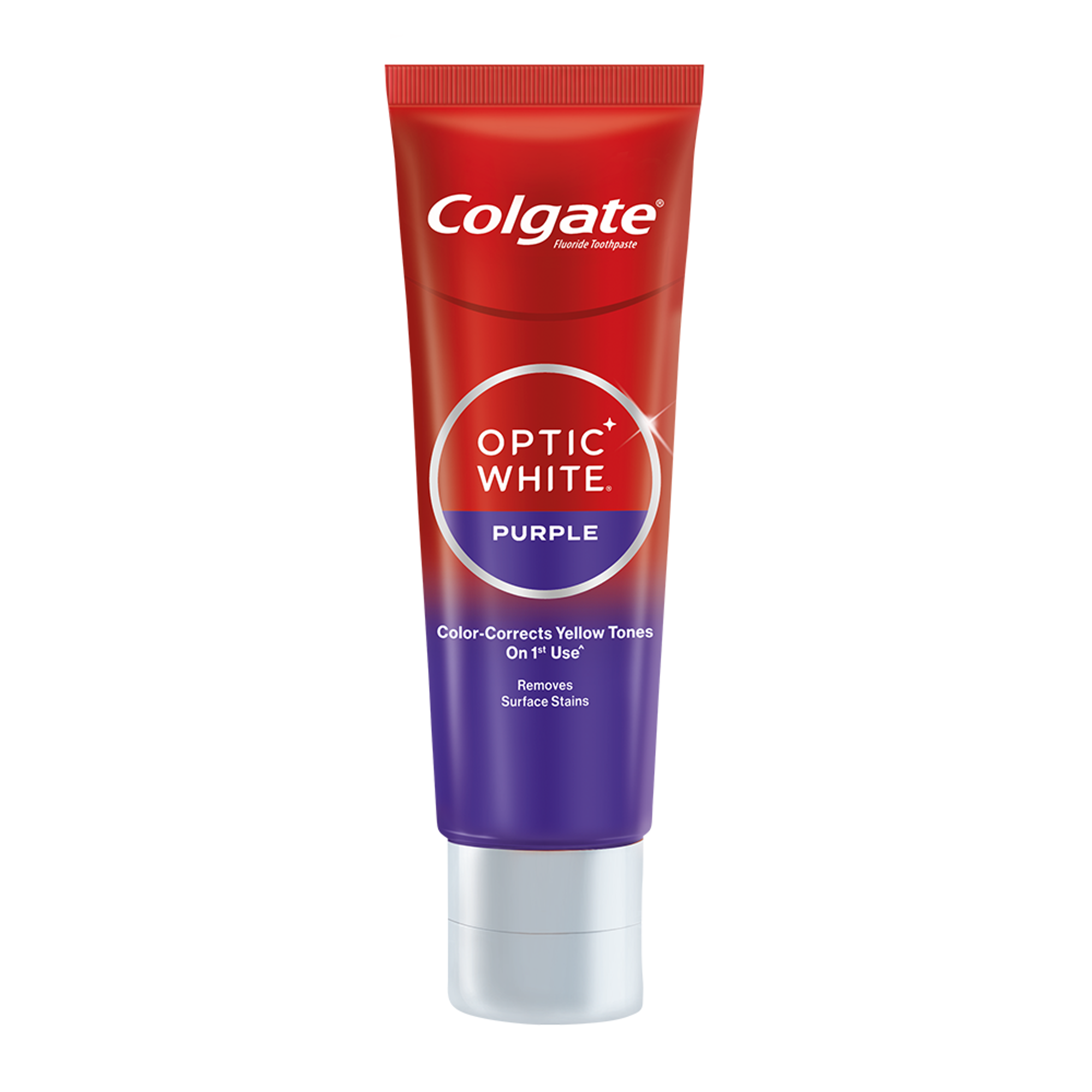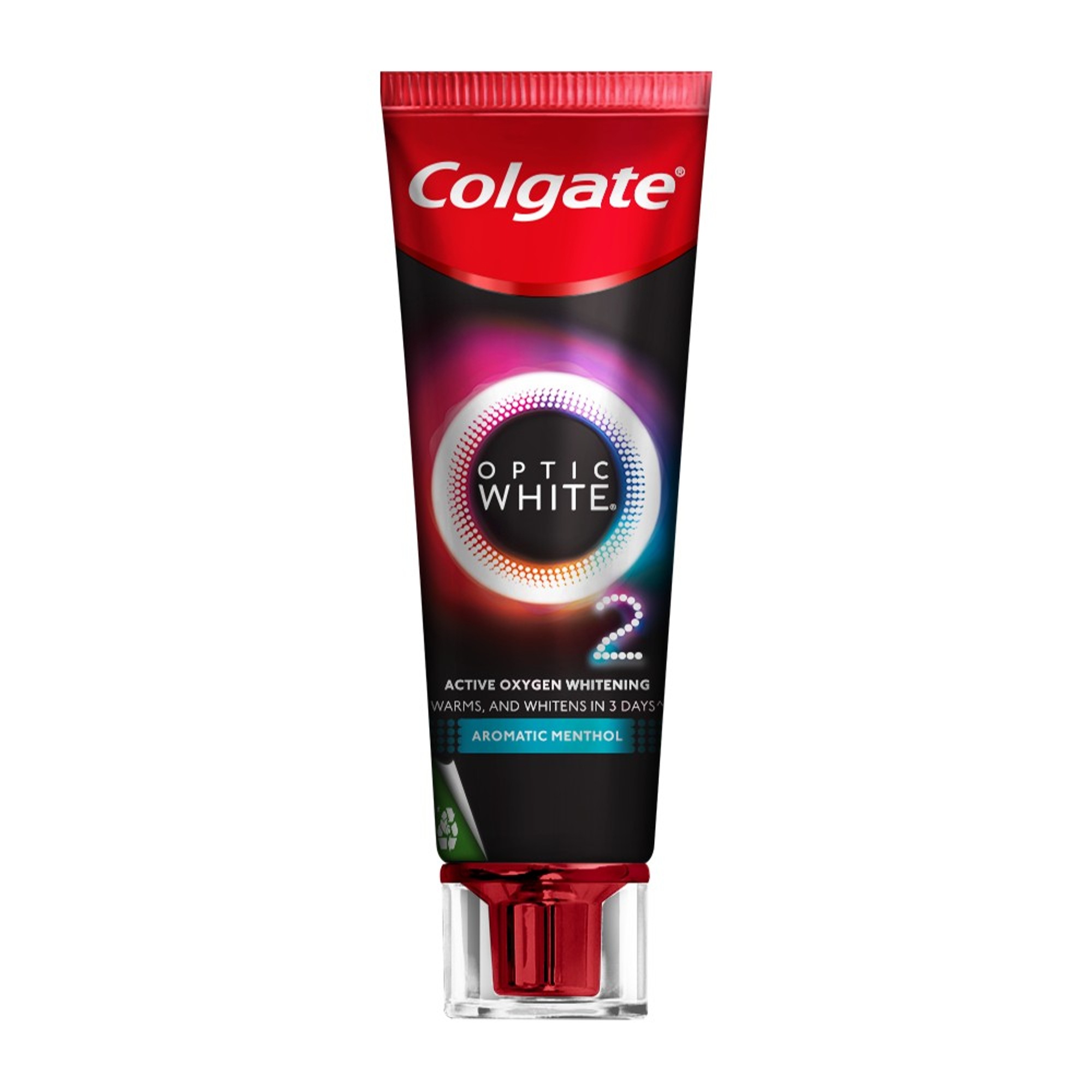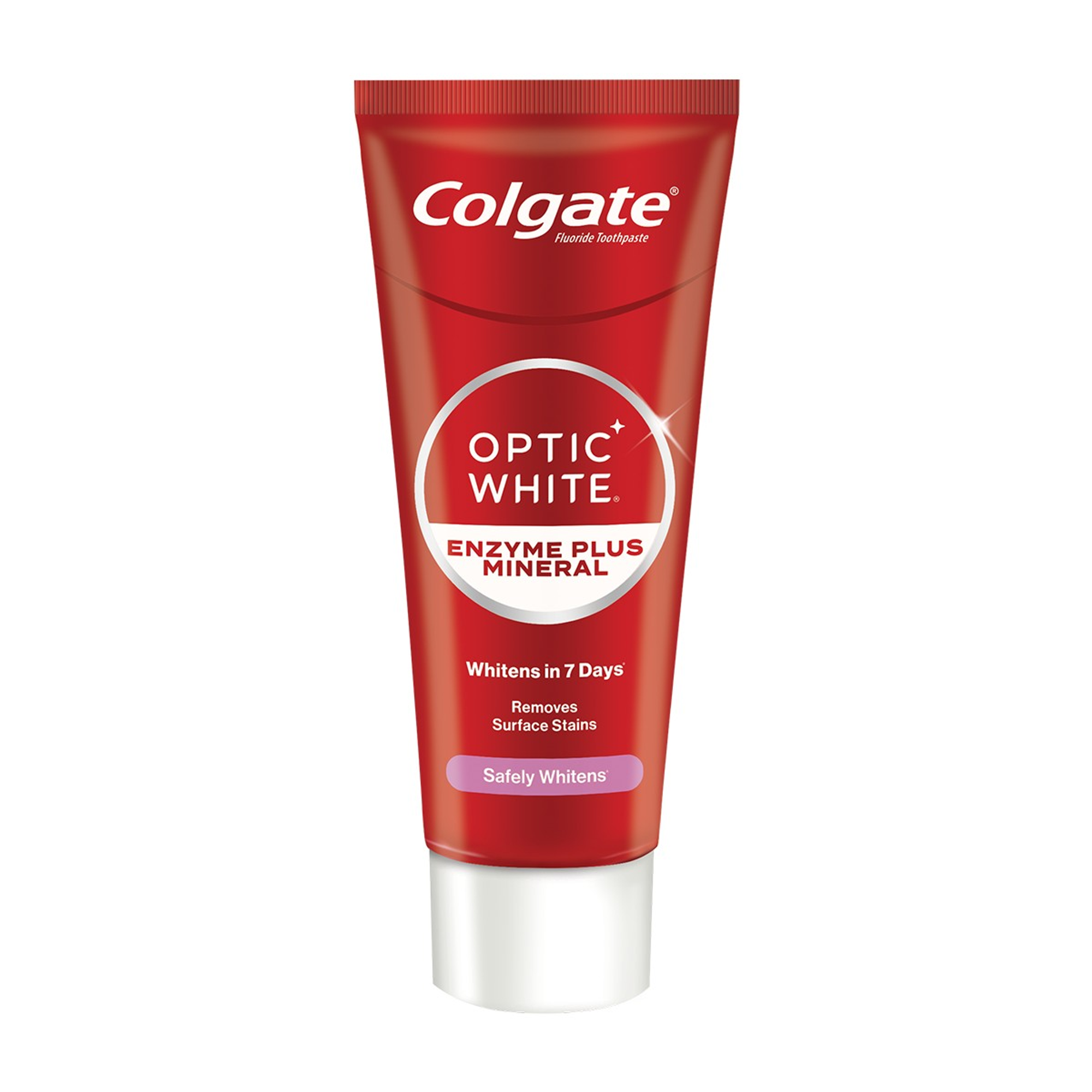

Purple Toothpaste
THE BEAUTY HACK THAT LET YOU SHINE IN AN INSTANT!
How Does Professional In-Office Whitening Work?
Professional teeth whitening is also called chairside bleaching. In this procedure, dentists apply a bleaching gel containing hydrogen peroxide or carbamide peroxide to your teeth. Peroxides whiten teeth by releasing oxygen molecules that break down the stain-causing pigments and lighten the tooth shade. Chairside tooth bleaching removes stains on the enamel surface, caused by colored foods and drinks, and stains beneath it, giving dramatic whitening results.
Bleaching gels may cause mild tooth sensitivity for some people. Dentists suggest using a desensitizing toothpaste before the procedure. They often use a rubber shield or a protective gel to prevent gum irritation. In-office tooth whitening usually takes up to an hour and a single visit or more, based on the severity of the stains. Dentists may also provide customized mouth trays with weaker gels to continue the process at home. For extreme tooth discoloration, they may suggest alternatives like veneers.
What are My At-Home Whitening Options?
Wondering how to whiten teeth without visiting the dentist’s office? Many safe and effective options are available. They include various over-the-counter products, from whitening toothpaste and pens to LED whitening kits. Unlike in-office whitening treatment, which gives instant teeth whitening, these products whiten teeth gradually with regular use.
Some people even look for a whiter teeth home remedy using kitchen staples. It is vital to use teeth whitening products as directed for the best results. Approach natural remedies with caution to prevent any harm to your teeth and gums. Below are the most common at-home whitening options.
Teeth Whitening Toothpaste
If you are considering how to whiten teeth at home, a whitening toothpaste is something you can easily add to your routine. It typically contains mild abrasives that lift surface stains caused by coffee, tea, berries, or red wine. Some toothpastes contain whitening agents such as hydrogen peroxide to remove deeper stains. However, such formulas may irritate the gums and cause tooth sensitivity for people.
The Colgate Optic White Purple toothpaste can be a good brightening alternative. It uses Purple Brighteners that can help color-correct yellow tones on your teeth. Coupled with Micro-Polishing Crystals (high-clean silica), it helps lift surface stains to enhance overall brightness. Incorporate it into your daily routine by brushing twice a day for 2 minutes, or use it before important moments to effortlessly neutralize unwanted yellow tones and boost confidence.
Teeth Whitening Pens, Gels, and Serum
These teeth whitening products make it easy to achieve a brighter smile on the go. They often contain a low-concentration peroxide-based formula. It bleaches the stains on the enamel surface.
Tooth whitening gel or serum: Many gels and serums are peroxide-based and used with applicators, teeth whitening strips, or trays that keep the bleach in contact with enamel for a set time. For a color-correcting alternative, try Colgate Optic White Purple Serum which is a slick, smooth, brush-on booster that uses Colgate’s clinically tested, superior color-correction technology to neutralize yellow tones for whiter teeth. The formula is enamel safe, suitable for daily use, and features a refreshing mint & yuzu flavor. This is not a substitute for toothpaste. Apply 1 pump to a toothbrush in addition to your regular routine, gently brush for 2 minutes, then expel excess and rinse.
Teeth whitening pen: Compact, travel-friendly tool to brighten your teeth. They often contain a peroxide-based whitening gel or serum. After brushing your teeth, you may directly apply the serum using the brush tip of the pen. Leave it on for the recommended time before rinsing to let the bleaching agents work on surface stains.
When considering how to whiten teeth before an event, these products are great for a quick touch-up. They also help maintain your whitening results between treatments. It is important to follow the usage instructions carefully for safe results.
LED & UV Light Whitening Devices / Kit
A teeth whitening kit is a popular choice among people who consider how to whiten teeth at home. It usually includes a whitening gel and a mouthpiece. Most kits use LED or UV light for teeth whitening. The whitening gel is typically a low-strength peroxide-based formula. You may place the gel into the mouthpiece and wear it on your teeth for a specified duration. The light helps activate the gel and speed up the whitening process for quicker results.
Many people use teeth whitening kits for noticeable results. However, overuse of these tooth bleaching products may result in sensitive teeth or gum irritation. It is vital to follow the usage guidelines carefully and use them moderately as recommended.
Natural Remedies
When looking for how to whiten teeth naturally, home remedies may tempt you. Many people consider a tooth whitening home remedy using kitchen staples to whiten their teeth. The popular ones include:
Baking soda: It may have a mild abrasive action on surface stains. Typically, people prepare a paste or mouthwash by mixing baking soda and water.
Activated charcoal: It is believed to help whiten teeth by absorbing stains and impurities. Many people use activated charcoal as a paste or powder to brush their teeth.
Oil pulling: An ancient practice that is considered to remove germs and plaque from the mouth. Typically, a tablespoon of coconut oil is swished in the mouth before spitting it out. However, the effect of oil pulling on stain removal lacks enough scientific evidence.
Most natural teeth whitening remedies are not science-backed and are likely to cause side effects. Dentists advise caution, as some ingredients can be abrasive and wear down the enamel with excessive or frequent use, leading to tooth sensitivity. Use a dentist-approved whitening solution for safe and effective results.
How Do Whitening Toothpastes Work?
A whitening toothpaste is an easy and affordable tool to brighten your smile. Using it regularly can help you manage yellow teeth stains from foods, drinks, and tobacco use. It also helps prevent new stains from appearing following a whitening treatment. Here is how whitening toothpastes typically work to brighten your teeth:
Surface stain removal: Most whitening toothpastes contain mild abrasives and polishing agents. They scrub away surface stains caused by pigmented foods and drinks.
Whitening ingredients: Some toothpastes contain peroxides. They bleach stains on the surface and below the enamel. Some use safe whitening agents, like silica and pyrophosphate, that brighten teeth gradually.
Fluoride: It is an essential ingredient for a teeth-whitening toothpaste. Fluoride helps protect and strengthen the tooth enamel. A whitening toothpaste containing fluoride supports good oral health while reducing stains.
Some toothpastes contain special ingredients for plaque and tartar control. Choosing a whitening toothpaste that promotes good oral hygiene is key to a healthy, bright smile.
Is Teeth Whitening Safe?
Teeth whitening is usually safe when done by a dental hygienist or an experienced professional in dental practice. Using dentist-approved products as directed also ensures safe results without side effects. Most teeth whitening methods use bleaching agents like peroxides to remove stains and lighten the tooth shade. However, their incorrect or excessive use can cause sensitivity and gum irritation. Here are some tips to whiten your teeth safely:
Follow the instructions: Use teeth whitening products as directed on the label.
Choose approved products: Look for high-quality products with the ADA (American Dental Association) seal of acceptance or recommended by a dentist.
Avoid overuse: Excessive use of bleaching products can damage the enamel and irritate your gums. Use them in moderation as directed.
Consult a dentist: A whitening solution that suits one person may not suit another. It is best to consult a dental professional to know which teeth whitening method is best for your unique oral conditions. Prior medical advice is vital if you have oral care issues like cavities or gum problems. It is crucial to address them before whitening teeth.
When considering how to whiten teeth, your options abound. Choosing a safe and effective whitening method is key. When used as directed, products like whitening toothpaste can brighten your smile gradually. In-office bleaching offers instant, dramatic results. Consult a dentist to know what is best for you. To maintain white teeth for longer with good oral hygiene. Daily brushing, flossing, and rinsing, along with regular dental visits, are key to a healthy, bright smile.
Frequently Asked Questions
How Can I Maintain My White Smile After Treatment?
When considering how to maintain white teeth, good oral care is key. Brush twice with a whitening toothpaste and floss every day. Rinse your mouth after every meal. Avoid colored foods and drinks that can stain teeth again. Schedule regular dental cleanings.
Can Yellow Teeth Turn White Again?
Yes, yellow teeth can become white again with the right teeth whitening treatment. You can opt for an in-office bleaching from a dentist or use a dentist-approved product like whitening toothpaste regularly as directed. Good oral hygiene helps prevent new stains.
How Long Do the Results of Teeth Whitening Typically Last?
Whitening results can last anywhere from a few months up to two years. It depends on your oral care routine, diet, and lifestyle habits. Avoiding stain-causing foods, quitting tobacco use, and ensuring good oral hygiene can help the results last longer.
What Foods and Drinks Should I Avoid to Maintain White Teeth?
Limit colored foods and drinks like berries, dark sauces, tea, coffee, tea, red wine, and soda. They contain pigments that can stain your teeth. If consuming them, avoid direct contact with your teeth using a straw and rinse your mouth after consumption.







